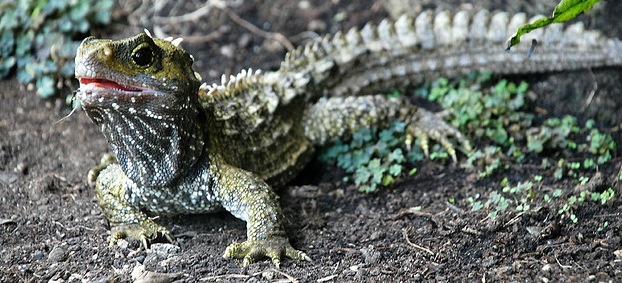On the award-winning CD Ask the Planet, the song Wise Like You asks three species to share their secrets. Today we focus on the tuatara, a New Zealand reptile that was around when dinosaurs roamed the Earth more than 200 million years ago. Amy Martin’s song lyrics go,
“Tuatara, You are a-mazing / You’ve been here for 200 million years / And you can hear without an ear / You’ve got three eyes / If we sit at your knee / will you tell us a story or two?”
Three eyes? Hear without an ear?
Let’s talk about those three eyes. The first two eyes, which are located in the normal place on the tuatara, are special all on their own. They can focus independently, so one could focus on an object up close like something the tuatara plans to catch for breakfast, while the other can keep an eye out for predators. They also have retinas that enhance both day and night vision. Just as in cats, there is a layer of tissue behind the retina that reflects light back into the photoreceptors to further enhance night vision.
What about that mysterious third eye? If you see an adult tuatara, you won’t see this eye because it’s only visible in hatchlings. On them, it appears as a translucent patch on the crown on the head. As they age, it gets covered up but apparently still functions; scientists are just not sure what it does. It clearly isn’t used for normal vision, but it might absorb UV light or help the tuatara regulate its temperature.
As for the lack of ears, the tuataras do have them, we just can’t see them. There are no external ears or even holes into the middle ear cavity. In our human ears, the middle ear is where those three famous little bones are — the hammer, anvil, and stirrup — which don’t occur in the tuatara. Despite this being a primitive ear structure, it can detect frequencies from 100 to 800 Hz. While that isn’t a wide range compared to our range of 20-20,000 Hz, it’s been good enough for it to have survived 200 million years.

